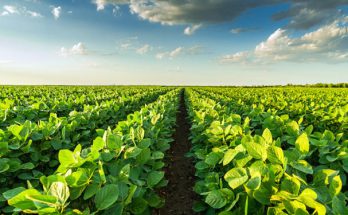 Although South Africa’s climate is ideal for kiwifruit production, attempts to establish a green kiwifruit industry in the early 1980s foundered due to the use of incorrect varieties and local consumer resistance to what was then a little-known fruit.
Although South Africa’s climate is ideal for kiwifruit production, attempts to establish a green kiwifruit industry in the early 1980s foundered due to the use of incorrect varieties and local consumer resistance to what was then a little-known fruit.
Malcolm Nicholson, owner of the 1 150ha mixed enterprise, Roselands Farm, near Richmond in KwaZulu-Natal, was one of the pioneers of green kiwifruit production in SA, planting a 7ha kiwi orchard on the farm in 1983.
When his son, Peter, took over the running of Roselands in 2005, he retained the orchard. At this time, New Zealand’s kiwifruit industry, which began just prior to SA’s attempt, was thriving and had grown to 14 000ha.
But Peter believed that the Chinese gooseberry, as the fruit is also known, still held potential for SA farmers.
Then, in 2012, he was approached by Australian, Colin Lye, who was an expert on golden kiwifruit grown in New Zealand.
Most green kiwifruit (Actinidia deliciosa) have a fuzzy, dull-brown skin and bright-green flesh. This is the kiwifruit species with which most South Africans are likely familiar. By contrast, golden kiwifruit (Actinidia chinensis) has a smooth, bronze skin, with a beak shape at the stem attachment.
“Colin told me golden kiwifruit was generating excellent returns for New Zealand growers through exports to Europe and Asia when northern hemisphere production was out of season,” says Peter.
Colin also pointed out that, because SA is further north than New Zealand, local farmers were ideally placed to take advantage of the four- to six-week period every year when SA’s golden kiwifruit would be ready for market before New Zealand’s crop.
In 2013, Peter established a golden kiwifruit orchard on 10ha at Roselands. He’s currently one of approximately 14 pioneers trialling golden kiwifruit production in SA.
The farmers have formed business arrangements with local nurseries that propagate young vines. Dutch company, BGIP, is also involved through its local agency, SA Kiwi Pollen (SAKP), and promotes the development of SA golden kiwifruit production and markets the fruit, which is primarily of the Soreli Gold variety.
Setting up the orchard
The hail netting for the 10ha orchard cost Peter about R250 000/ha. A further R250 000/ ha to R300 000/ha was spent on buying and planting young vines of the Skelton and Soreli Gold varieties, and maintaining them through their first three years of growth.
The trees enter production in their fourth year, and it costs about R60 000/ha/year to manage a mature gold kiwifruit orchard from then onwards. Production is still well below peak potential in the fourth year. “It’s only when consistent peak yields are achieved every year that profits can start being generated,” warns Peter.
“In hindsight, I would have delayed putting up the hail netting until the vines were in production, as it’s a large upfront expense.
“We’re also producing our own vines now at a fraction of the cost of what we paid for the original plants.”
Peter planted his original four- to five-month-old vines at 1 000 plants/ha, spaced 2,5m apart, with an intra-row spacing of 4m.
Before manually transplanting each young vine into its own small, hand-dug hole, the hole was filled with 0,5kg of bonemeal, which is high in phosphorous and calcium – important macronutrients for golden kiwifruit.
For the diversity of organic nutrients and beneficial soil microbes it contains, 5kg of compost was also added to each hole before planting.
Temperature, water and mulching
Important to optimal development of vines and fruit is the accumulation of at least 350 to 400 hours of winter temperatures of between 4°C and 7°C, together with summer temperatures that do not regularly exceed 35°C.
Golden kiwifruit plants also require double the volume of water required by citrus. Since Roselands’ annual rainfall averages 1 300mm, Peter only uses his micro-spray irrigation system between rainfall events.
“Mulching is very important for all kiwifruit varieties,” he adds. “They have a shallow, but broad, fibrous root system that sources nutrients from a relatively large area close to the soil surface. The mulch also suppresses weeds around the base of each kiwifruit vine, and helps retain soil moisture and provides cover and nutrients for beneficial earthworms and soil microbes.”
Peter uses Themeda triandra grass and each vine gets fresh mulch every August.
To further stimulate the soil, he plants a range of cover crops between rows.
These include cocksfoot grass, oats, rye, several types of clover, vetch, lucerne, spinach, radishes, and turnips. To attain added value from these cover crops, Peter’s beef weaners graze them during winter.
Fertiliser requirements and pollination needs
Golden kiwifruit requires a lot of fertiliser. To meet this demand, Peter sends soil samples from his orchard to Brookside Laboratories in the US every January and July.
For the first three-and-a-half years, Brookside’s fertiliser recommendations were applied by hand around the base of each vine. With the vines now older, fertiliser is broadcast throughout the orchard by a tractor-mounted spreader. Leaf samples from the first new spring growth are also analysed by Brookside Laboratories. These results inform Peter if he needs to apply additional fertiliser together with foliar feeding, applied using a mistblower, for better summer growth.
The inorganic fertiliser is a typical nitrogen (N), phosphorus (P) and potassium (K) mix with added micronutrients such as boron and calcium.
“It’s important to apply these in early summer for optimal vegetative growth and the largest possible fruit size,” explains Peter. “The foliar feed incorporates kelp and fish emulsions that are high in natural growth stimulants. These complement the inorganic fertiliser applications.”
On Roselands, bud break starts in early September with flowering in early October. As kiwifruit plants are dioecious, both male and female plants must be present for pollination. Peter therefore has two male plants for every four females in his orchard.
Bees are vital for the pollination of Roselands’ female golden kiwifruit plants. Peter uses his own beehives, at eight hives/ ha, to do the initial work. To maximise fruit size, quality and quantity, he also buys pollen from SAKP. This is applied directly to flowers at 1kg/ha using a handheld airgun. Fruit set occurs a few days after pollination, at the end of October, with harvesting occurring at the end of February.
As the vines grow, they’re trained onto a 180cm-high pergola system that encourages them to grow outwards instead of vertically. “The larger a vine, the more flowers it has for pollination and fruit production,” says Peter. “However, we still have to prune the vines every winter and summer to keep growth under control.”
Pests and diseases
Aside from birds and vervet monkeys, Peter contends with relatively few pests. While fruit flies become a problem close to harvesting, they are controlled through integrated pest management, which involves placing pheromone traps in the orchard.
Golden kiwifruit do not suffer from many diseases, Peter says, which means that the farmer could save on buying costly chemicals that are potentially harmful to people, animals and plants.
SA’s future in kiwifruit
When the fruit is ripe and ready for harvesting – with the ideal fruit size being 100g to 120g, it is hand-picked and delivered to the nearest packhouse. From here, it is shipped as quickly as possible to Asia and the EU in order to take advantage of the four- to six-week window before New Zealand’s fruit enter the market.
This year will see Peter’s first golden kiwifruit harvest. He expects a yield of 1t/ha to 2t/ha. From year five or six, the orchard could well start achieving its peak production of 40t/ha to 50t/ha.
At the current R18/kg to R22/ kg farm-gate price, Peter stands to make a significant profit once his orchard is in full production.
“This is very much a trial to see if golden kiwifruit production on a far larger scale is viable in SA,” he says.
“Licence agreements have capped Skelton and Soreli Gold production in SA at 500ha each. So there’s still scope to expand production by up to 900ha should the trial prove successful.
“I believe it’s vital for SA farmers to look at producing crops that can be exported to earn foreign exchange,” adds Peter.
At current costs and farm-gate prices in SA, Peter has calculated that a 40t/ha yield could generate up to R500 000/ha in profit.



